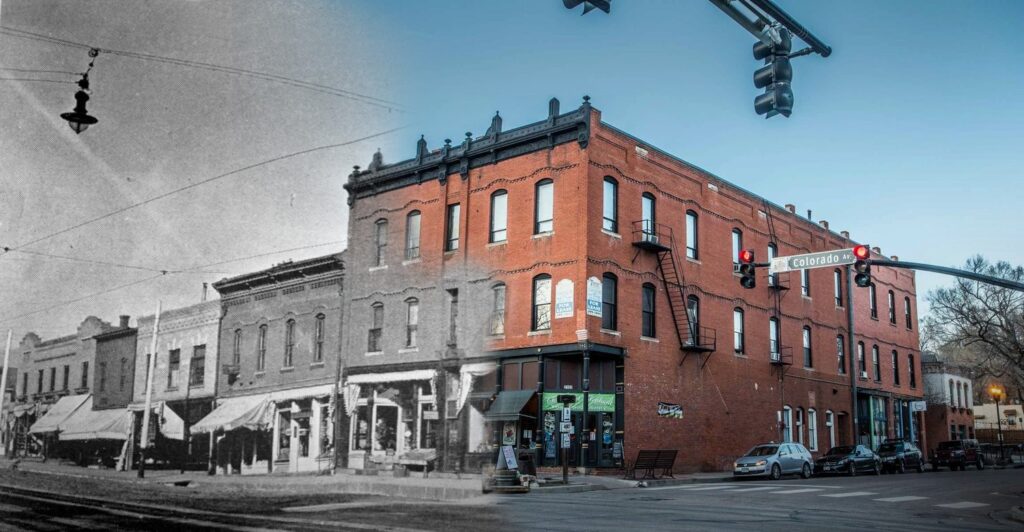The drive south from Pueblo gives a not-so-subtle hint of just why Colorado has a reputation for sheer beauty. To the east, you see the first stretch of the Great Plains, a vast expanse of mostly flat land interrupted only by periodic undulations that can only—and generously–be called hills. Still, there is a quiet beauty across these plains. They have a rugged loveliness all unto themselves. To the west, is an amazing geographic contrast. What you see are the Wet Mountains, the gem of which is Greenhorn Mountain, a peak that, depending on the sunlight, seems to have a unique and ever-changing chameleon beauty.
Getting off the interstate, the first town you encounter is Colorado City. But you need to be careful. There are no signs posted reading, ‘You are now entering Colorado City.’ Still, if you miss it and go too far, the drive is a lovely excursion and you may end up in the nearby hamlet of Rye which, by contrast to Colorado City, is a bustling metropolis. But that is just fine with the folks in Colorado City. They appreciate the quiet. It’s one of the reasons they call it home.
“We are not the touristy type of place,” said James Eccher, Colorado City’s District Manager. Of course, it is your kind of place, he added, if “you enjoy the outdoors… golfing, camping and fishing.” The town has a championship golf course that Eccher said offers specials on
“Tuesday and Thursday.” There’s also a nice sized lake within its boundaries and, of course, if camping and fishing are your cup of tea, that’s not far away.
Colorado City is an easy getaway that’s less than twenty miles from Pueblo, the place where most of its residents go for shopping, doctor visits and all the amenities of a city. That, said Ecchers, is just the way the 2,200 residents want it. Of course, if things had gone according to plan, a plan devised way back in the mid-twentieth century, it would not be the place it is today.
When Colorado City was first conceived, Ecchers said, developers saw it as a retirement community. “Lots were sold back East for people to move out to Colorado and retire.” The plan was great in theory, but theory and reality often don’t intersect. Also, it didn’t help when the developer died. His dream and death were followed by a bankruptcy.
Had theory and reality merged, buyers would have scooped up many or even all of the area’s 16,000 lots, some ranging from a fifth of an acre to others many times that size.
The developer, for reasons unknown today, also omitted two key elements of his vision. “Eighty percent or more of the lots have no access to water or sewer,” said Ecchers.
But scanning the landscape, it appears that a developers’ failed dream actually worked out well. Open space is abundant and majestic views are unobstructed. And for those who did buy into their long-ago dream of living at the foot of the Rockies, many of whom were scattered across the country, even around the world, there seems to be no memory of their disappointment. Still, the town is growing, but slowly. “We have grown in the last four years,” said the affable Ecchers. Since he’s been the town’s top-of-the-food chain administrator, growth has been “at a rate of 25-30 houses a year.”

While Colorado City remains a shadow of what a long-ago developer envisioned when he started selling lots, that doesn’t bother the 2,200 residents who today call it home. It’s close enough to Pueblo to escape ‘city life,’ yet not so far that a twenty-minute drive can’t solve the challenge of visiting a doctor, taking in a movie or doing whatever needs to be done in nearby Pueblo. Incidentally, the short drive to Pueblo is a regular thing for a lot of the town’s folks who commute to the city for work.
For historians, the area where Colorado City now sits, there’s a fascinating and bittersweet legacy. The land was once explored by Spaniards who came up from New Mexico and engaged in regular and bloody conflicts with the Comanche, the land’s original occupants. Not surprising, as is the case in so many other places, there is little trace today of the Comanche.
Incidentally, Green Mountain was originally known as Cuerno Verde, one more legacy of the Spaniards and expedition leader, Juan Bautista de Anza. It remained that way until the early 20th century when the mountain was renamed. On April 4, 1906, the U.S. Board of Geographic Names decided to use the Americanized appellation. If you happen to be traveling on I-25 south of Pueblo and find yourself wondering about it, the easily identifiable jewel of this range rises to the elevation of 12,352 feet.



